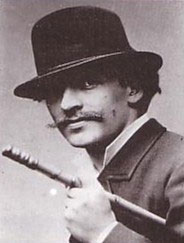Animation Academics
An Overview of the History and Theory of Animation.
Thursday, November 11, 2021
Monday, January 25, 2016
Tuesday, October 5, 2010
Anticipation
Anticipation is used to prepare the viewer for an action. It helps make the action look real. For example, when you jump rope, you bend your knees before you jump. Another example of anticipation is when a character sees or hears something off-screen. The character's attention focuses in the direction of the object or sound is coming from. Watch how the character in this animation moves their arms and legs before taking off:
Thursday, February 11, 2010
T-shirt War
I loved this animation. Here is the info on how they did it... don't forget to check out their channel!
TECHNICAL EXPLANATION FOR GEEKS LIKE US: We changed shirts over 100 times each, taking individual pictures of each unique shirt. The designs on the shirts are not photoshopped. They are real shirts for each frame of animation. The video was exported at 30fps, while the T-shirt animation moves at 6fps (with a few exceptions where it moves faster) So, for each shirt, we took 5 pictures, so the animation of us (Rhett&Link) moves at 30fps, but the T-shirt animations move a bit slower. There are a few places where the motion seems so smooth that it looks like video. That's because, in those parts, there was no changing in T-shirts, and Joe used burst mode to capture the frames, making it look very smooth.
TECHNICAL EXPLANATION FOR GEEKS LIKE US: We changed shirts over 100 times each, taking individual pictures of each unique shirt. The designs on the shirts are not photoshopped. They are real shirts for each frame of animation. The video was exported at 30fps, while the T-shirt animation moves at 6fps (with a few exceptions where it moves faster) So, for each shirt, we took 5 pictures, so the animation of us (Rhett&Link) moves at 30fps, but the T-shirt animations move a bit slower. There are a few places where the motion seems so smooth that it looks like video. That's because, in those parts, there was no changing in T-shirts, and Joe used burst mode to capture the frames, making it look very smooth.
Thursday, February 4, 2010
Fernand Léger

Fernand Léger, photo by Carl Van Vechten
Library of Congress, Prints & Photographs Division,
Van Vechten Collection.
In 1924, in collaboration with Dudley Murphy, George Antheil, and Man Ray, Léger produced and directed the iconic and Futurism-influenced film, Ballet Mécanique (Mechanical Ballet). Neither abstract nor narrative, it is a series of images of a woman's lips and teeth, close-up shots of ordinary objects, and repeated images of human activities and machines in rhythmic movement. [Eliel 2001, p. 44.]
Watch Mechanical Ballet on YouTube:
For more of Fernand's artwork visit the Art Institute of Chicago.
Tuesday, August 25, 2009
Émile Cohl
Émile Cohl (January 4, 1857 – January 20, 1938), born Émile Eugène Jean Louis Courtet, was a French caricaturist of the Incoherent Movement, cartoonist, and animator, called "The Father of the Animated Cartoon" and "The Oldest Parisian".
Portrait of young Émile Cohl
Monday, March 30, 2009
Cartoons could help spot Autism
Just when you thought cartoons have done it all, new research is showing that animations can help doctors spot autism as early as the few weeks to months of life. Read the article from the BBC here- http://news.bbc.co.uk/1/hi/health/7966770.stm
"This line of research holds promise for development of new therapies based on redirecting visual attention in children with these disorders." - Thomas Insel, US National Institute of Mental Health
"This line of research holds promise for development of new therapies based on redirecting visual attention in children with these disorders." - Thomas Insel, US National Institute of Mental Health
Subscribe to:
Posts (Atom)

